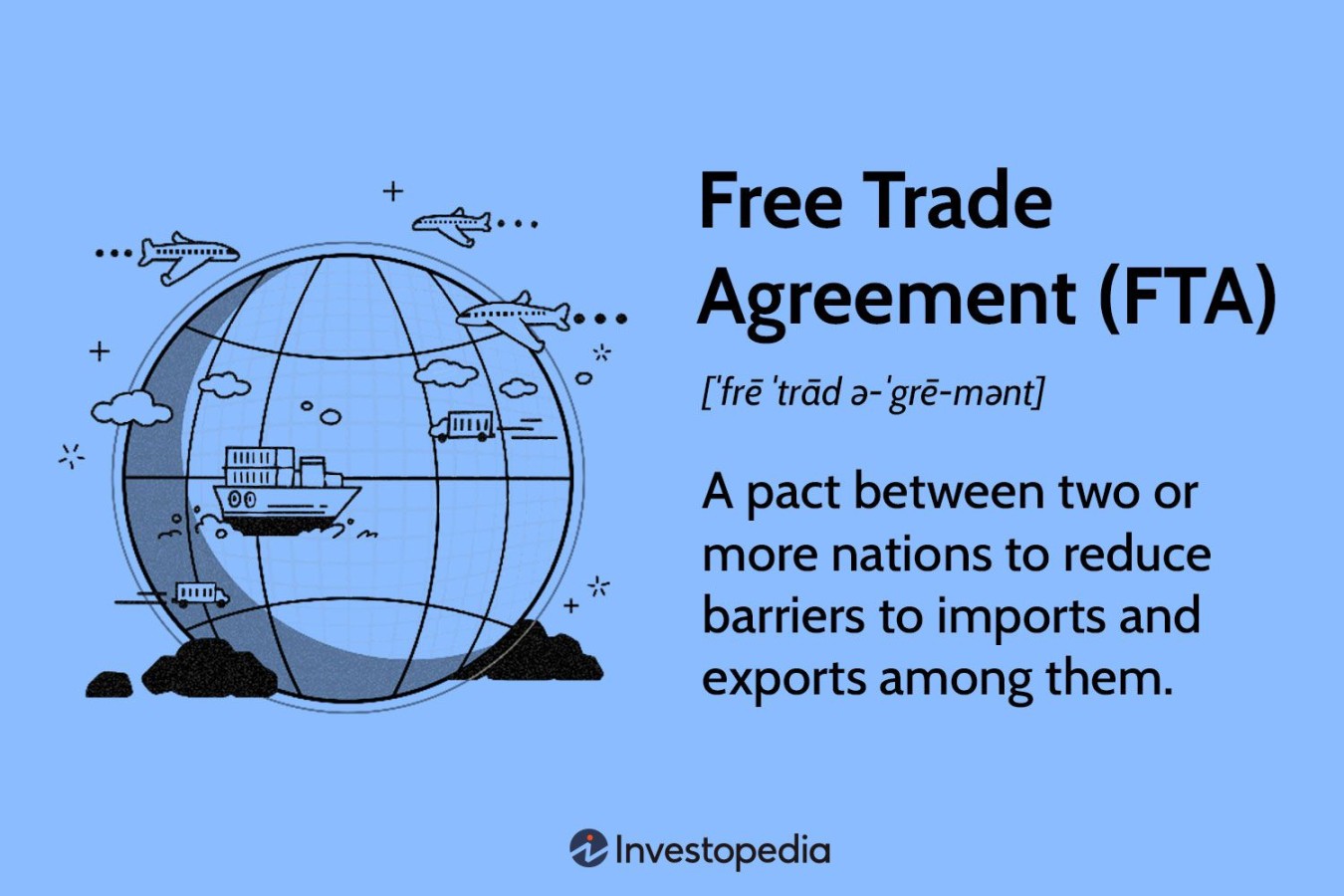Free Trade Agreements (FTAs): A Comprehensive Guide
Meta Description:
Delve into the world of Free Trade Agreements (FTAs) and explore their intricate details, including their definition, objectives, benefits, and potential drawbacks. Gain insights into the negotiation process, implementation challenges, and the overall impact of FTAs on global trade and economies.

Meta Keywords:
Free Trade Agreements, FTAs, international trade, trade barriers, tariffs, quotas, subsidies, trade liberalization, economic integration, globalization, world trade, economic cooperation, trade policy, international relations
What are Free Trade Agreements (FTAs)?
In the realm of international trade, Free Trade Agreements (FTAs) stand as pivotal instruments that aim to dismantle trade barriers and foster seamless economic cooperation between participating nations. These agreements, typically forged between two or more countries, establish a framework for reducing or eliminating tariffs, quotas, subsidies, and other restrictions that impede the flow of goods, services, and investments across borders.
The overarching goal of FTAs lies in promoting economic growth and prosperity among member countries by facilitating trade liberalization. By lowering trade barriers, FTAs encourage increased trade volumes, which in turn stimulates economic activity, job creation, and consumer welfare. Additionally, FTAs often encompass provisions related to intellectual property rights, dispute settlement mechanisms, and regulatory harmonization, further enhancing the predictability and transparency of the trading environment.
Objectives of Free Trade Agreements
Free Trade Agreements (FTAs) are driven by a set of fundamental objectives that seek to enhance economic cooperation and mutual benefit among participating nations. These objectives can be broadly categorized into the following areas:
At the core of FTAs lies the pursuit of trade liberalization, which involves reducing or eliminating trade barriers such as tariffs, quotas, and subsidies. This liberalization aims to facilitate the movement of goods, services, and investments across borders, thereby stimulating economic activity and promoting consumer welfare.
By fostering trade liberalization, FTAs aim to spur economic growth and prosperity among member countries. Increased trade volumes, enhanced market access, and a more predictable trading environment contribute to job creation, improved productivity, and higher living standards.
FTAs serve as catalysts for strengthening economic ties and cooperation between participating nations. By establishing a common set of trade rules and promoting dialogue, FTAs foster a spirit of collaboration and mutual understanding, which can extend beyond economic matters.
FTAs provide businesses with access to new markets and opportunities, enabling them to expand their customer base and diversify their operations. This market access can lead to increased sales, revenue growth, and enhanced competitiveness.
FTAs often incorporate provisions that promote fair and equitable trade practices, such as rules of origin, anti-dumping measures, and safeguards against unfair competition. These provisions aim to ensure a level playing field for all participants and protect domestic industries from unfair practices.
How do Free Trade Agreements Work?
The implementation of Free Trade Agreements (FTAs) involves a multi-faceted process that encompasses negotiation, ratification, and enforcement. The specific steps involved may vary depending on the nature of the agreement and the participating countries.
The negotiation phase is where the terms of the FTA are determined. Representatives from each participating country come together to discuss and agree upon the scope of the agreement, including the specific trade barriers to be addressed, rules of origin, dispute settlement mechanisms, and any other relevant provisions.
Once the negotiated text of the FTA has been finalized, it must undergo a ratification process within each participating country. This typically involves approval by the national legislature or other relevant authorities in accordance with each country’s domestic constitutional procedures.
Upon successful ratification by all participating countries, the FTA enters into force, becoming legally binding and enforceable. The specific date of entry into force may vary depending on the terms of the agreement.
Following its entry into force, the FTA is implemented by each participating country. This involves incorporating the agreed-upon provisions into national laws, regulations, and administrative practices. Effective enforcement mechanisms are crucial to ensure compliance with the terms of the agreement and address any potential disputes.
What are the Benefits of Free Trade Agreements?
Free Trade Agreements (FTAs) offer a multitude of benefits that can accrue to participating countries and their businesses. These benefits can be broadly categorized into the following areas:



